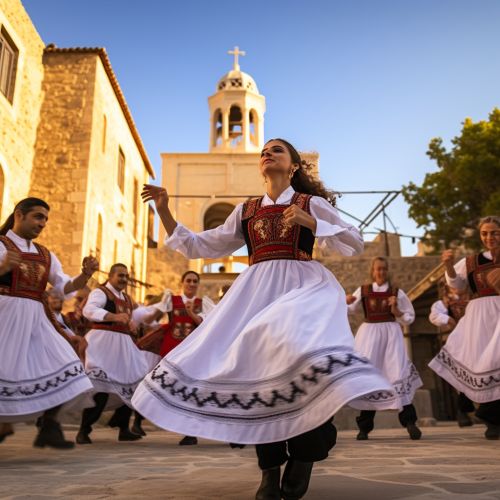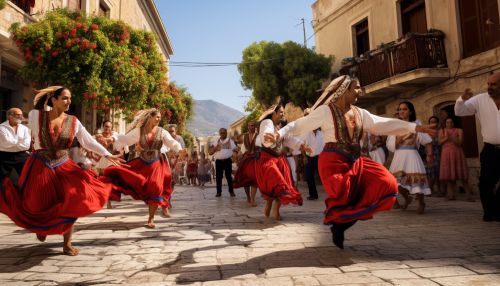Pentozali
Origins and History
The dance known as Pentozali is a traditional folk dance originating from the island of Crete, Greece. Its roots can be traced back to the period of the Ottoman occupation, making it an integral part of the island's cultural heritage. The name 'Pentozali', derived from the Greek words 'pente' meaning five and 'zalos' meaning step, refers to the five basic steps of the dance.
Description and Characteristics
Pentozali is a vigorous and lively dance, characterized by its fast pace and high energy. It is typically performed by a line of dancers holding each other by the shoulders. The dance begins with slow, measured steps and gradually increases in speed and intensity. The dancers perform a series of jumps and kicks, accompanied by intricate footwork and rhythmic clapping. The dance is often accompanied by traditional Cretan music, played on instruments such as the lyra and laouto.


Cultural Significance
Pentozali is more than just a dance; it is a symbol of Cretan identity and resistance. During the Ottoman occupation, the dance was used as a form of silent protest and a means of preserving Cretan culture. Today, it continues to be a significant part of social gatherings and celebrations on the island. It is also performed at cultural festivals and events around the world, showcasing the rich cultural heritage of Crete.
Variations
There are several variations of Pentozali, each with its own unique characteristics. The Maleviziotis, for example, is a slower version of the dance, while the Siganos is a more relaxed and fluid variation. Other variations include the Anogianos, the Rethymniotikos, and the Chaniotikos, each named after the region of Crete where they originated.
Learning and Performing Pentozali
Learning to dance the Pentozali requires practice and patience. It is recommended to start with the basic steps and gradually progress to the more complex movements. Traditional Cretan music, with its distinctive rhythm and melody, plays a crucial role in the performance of the dance. The dance is usually performed in traditional Cretan costumes, adding to its authenticity and cultural significance.
